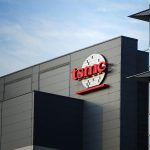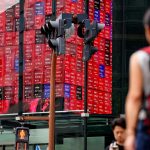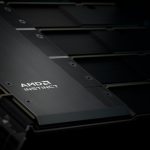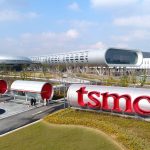
- AI Demand
- Applied Materials
- Market Forecast
Semiconductor Equipment Soars on AI Boom and Citi Upgrades
6 minute read

Semiconductor equipment demand surges as AI-driven investments fuel record industry growth and expanded manufacturing capacity
Key Takeaways
- Citi raises 2025-2026 WFE forecasts to flat growth in 2025 and 10% increase in 2026, upgrading from previous estimates of -5% and +2% respectively
- Price targets increased for major equipment makers with Applied Materials raised to $220, Lam Research to $108, and KLA Corp. to $1,035
- Global semiconductor equipment billings surge 21% year-over-year to $32.05 billion in Q1 2025, driven by AI demand and capacity expansion
Introduction
Citi adopts a more positive outlook on U.S. semiconductor equipment stocks, increasing its 2025 and 2026 wafer fab equipment (WFE) forecasts and raising price targets for Applied Materials, KLA Corp., and Lam Research. The improved outlook stems from an “improving memory outlook and higher AI cloud capex next year,” with WFE closely linked to data center capex and the industry’s need to boost WFE by $15-20 billion annually to support AI semiconductor growth through 2030.
According to Investing.com, Citi analysts note that recent geopolitical developments, such as China restoring rare-earth magnet export licenses and the U.S. lifting the EDA ban, have mitigated risks of a semiconductor equipment ban. The firm now projects flat WFE growth in 2025, advancing to a 10% increase in 2026, revising previous estimates of -5% and +2%.
Key Developments
Citi indicates that the sector is entering “Phase 2” of its cycle framework. Current P/E multiples for the top companies have recovered from April’s lows but remain around “20% below prior peak.” Among top picks, Citi favors “KLAC > LRCX > AMAT” due to higher leading-edge foundry and logic sales exposure, expected to grow the fastest.
The firm increases its KLAC FY26 EPS estimate by 3%, setting a price target of $1,035. For LRCX, FY25/26 EPS estimates rise by 2%/16% with a $108 target, while AMAT sees a 2%/8% increase for FY25/26 EPS, lifting its target to $220. Additionally, Nova Measuring has seen its market share increase by 4.5% since 2024, owing to product line strengths.
The ongoing AI boom serves as a primary catalyst for equipment demand, as chipmakers invest in advanced manufacturing to support next-generation AI workloads. SEMI reported global semiconductor equipment billings rose 21% year-over-year to $32.05 billion in Q1 2025, despite a typical seasonal dip from the previous quarter.
Market Impact
The semiconductor equipment market demonstrates strong momentum with significant financial backing. Micron’s forecasted capex for fiscal 2025 is $14 billion, in line with analyst expectations, despite short-term fluctuations in quarterly spending. This signals ongoing commitment to capacity expansion and technology upgrades, which directly benefits equipment suppliers.
The global semiconductor manufacturing equipment market is projected to grow from $99.38 billion in 2025 to $190.54 billion by 2034, at a CAGR of 7.5%. Asia-Pacific, particularly China and Taiwan, remain dominant regions, driven by domestic manufacturing initiatives, the presence of key suppliers, and emerging technology demands.
Citi’s price target increases reflect confidence in the sector’s medium-term growth prospects. The firm has raised its targets for leading equipment makers such as Lam Research (from $87 to $108) and Applied Materials (to $220), while maintaining Buy ratings on both companies.
Strategic Insights
The industry’s capital intensity creates sustained demand for advanced equipment. Companies that innovate in sustainability and cost efficiency are likely to capture outsized market share, as equipment makers respond to both customer and regulatory pressures for reduced cost of ownership.
There is accelerated development in compound semiconductors (SiC, GaN) to serve AI, IoT, automotive, and aerospace markets. Equipment suppliers are finding opportunities for differentiation and margin expansion through specialized technologies, including the resurgence of wet bench technology.
The need for advanced, efficient chipmaking tools to support AI and other emerging technologies reinforces the strategic importance of the equipment sector. The AI-driven capacity expansion is viewed as a secular growth driver, potentially insulating the sector from cyclical downturns.
Expert Opinions and Data
Citi analysts reiterated that Nova Measuring Instruments is on track to generate over $1 billion in revenue and earnings per share of $10. The company’s 41% revenue growth over the past 12 months demonstrates strong market positioning in metrology solutions for semiconductor manufacturing.
Laura Chen, Head of Citi Research for Taiwan, noted that Taiwanese companies should see improving profitability in 2H24 on the back of strong AI demand. Michelle Yu, Taiwan Head of Citi Commercial Bank, emphasized that AI applications are poised to drive business growth for enterprises.
Citi acknowledges risks such as “macro weakness, overdependence on AI semiconductor demand, and geopolitical risks related to Trump administration’s China/Taiwan policies.” However, the firm remains broadly optimistic due to the sector’s structural advantages and resilience amid geopolitical and supply chain uncertainties.
Conclusion
Citi’s upgraded forecasts and raised price targets signal strong confidence in the semiconductor equipment sector’s near-term prospects. The combination of AI-driven demand, sustained capital expenditure commitments, and improving geopolitical conditions creates a favorable environment for equipment manufacturers. The sector’s transition into “Phase 2” of its cycle framework, coupled with robust billing growth and expanding market opportunities, positions leading companies for continued outperformance in the current technology investment cycle.








